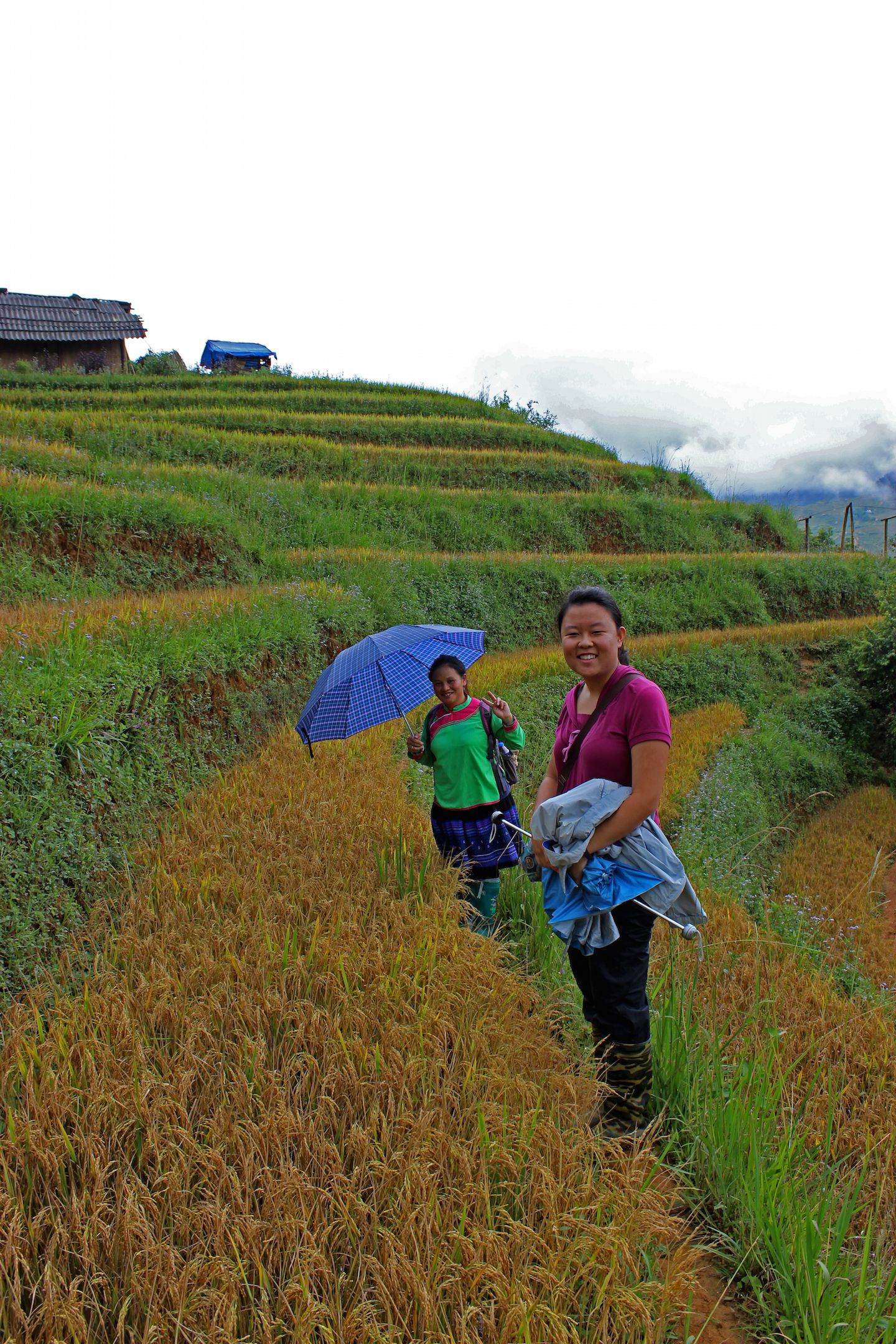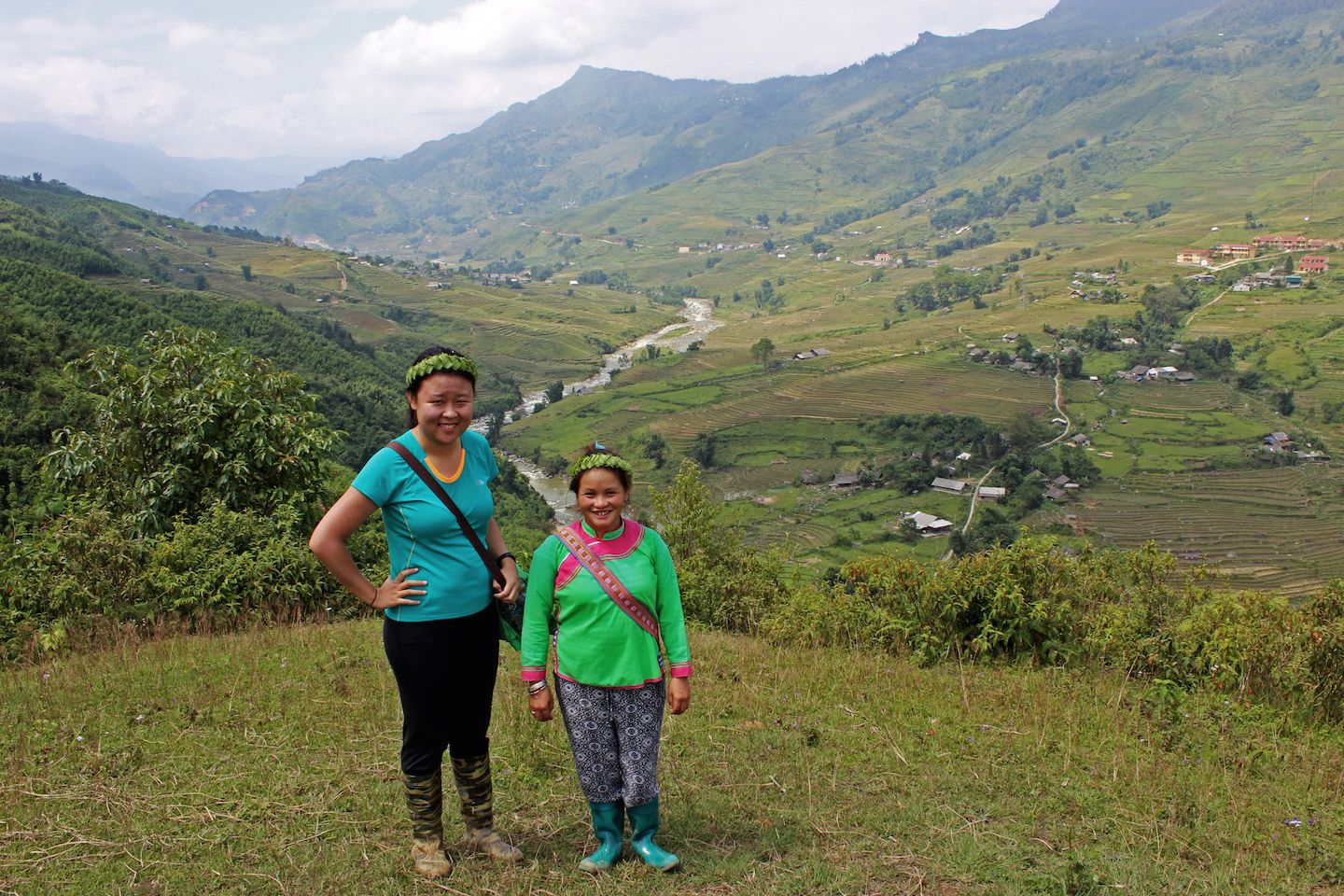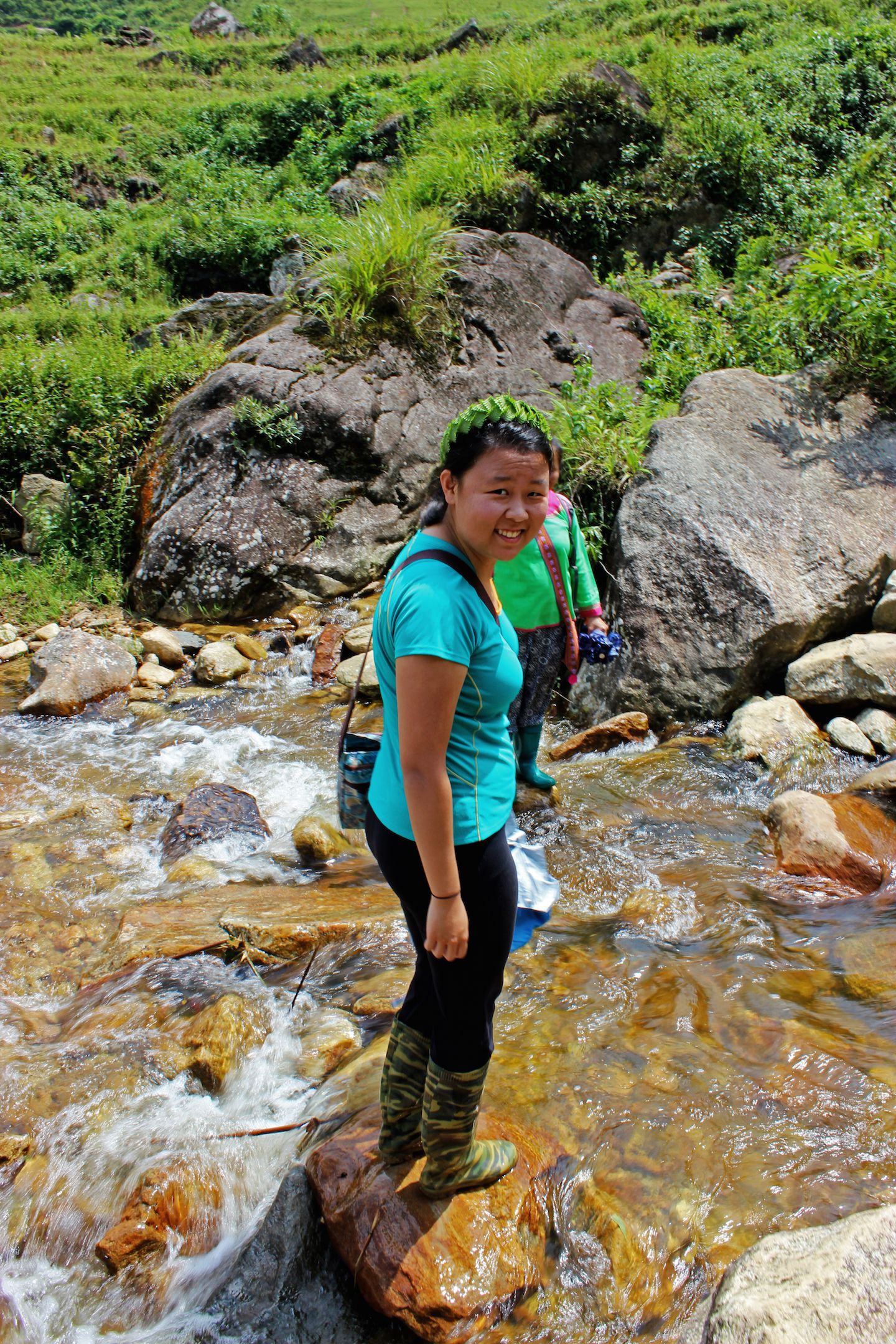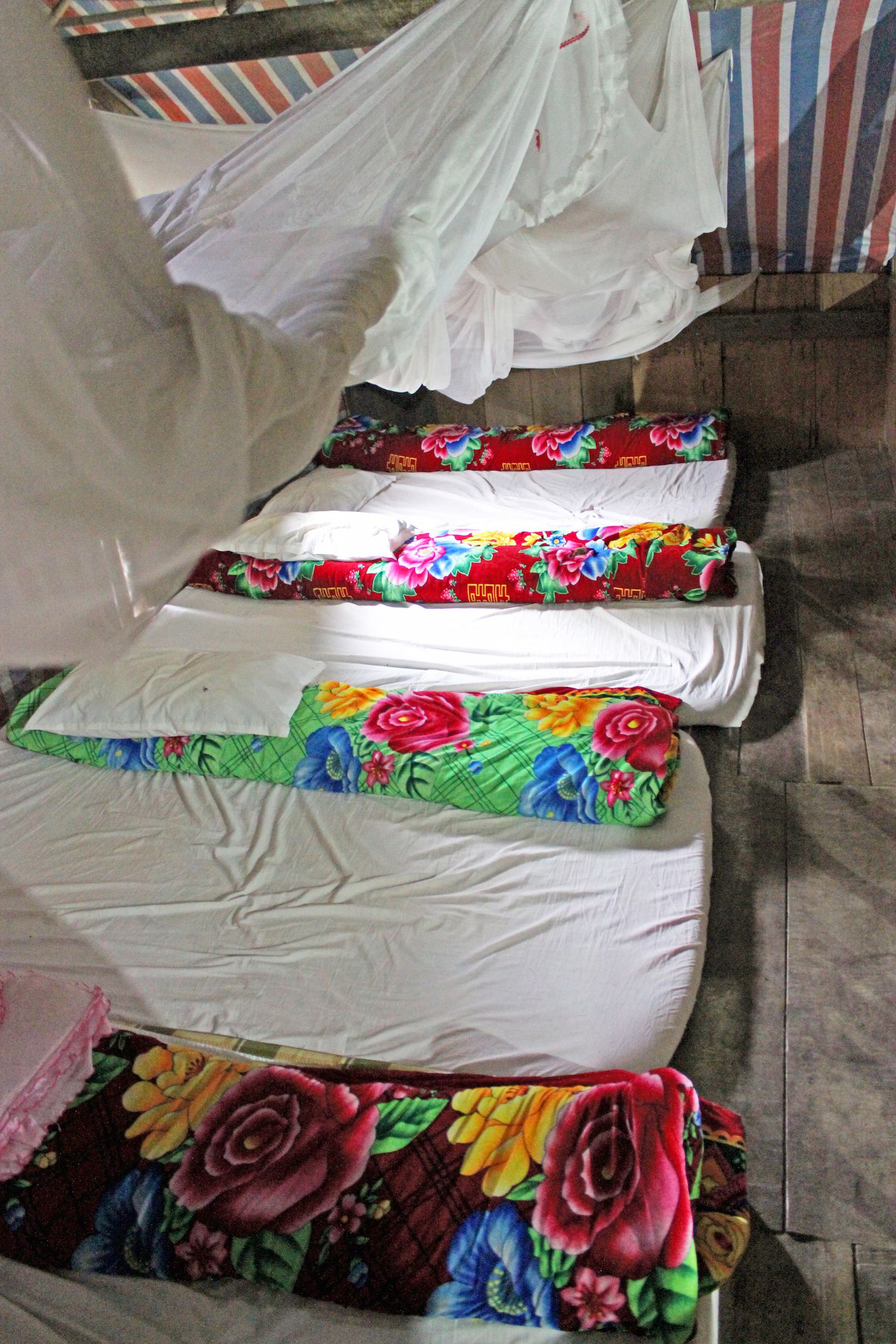Sapa was our first side trip from Hanoi as well as our first (of many) tours in Vietnam. After boarding a night train from Hanoi, we arrived in Lao Cai, from which a minivan took us up the mountains into the town of Sapa. Close to the border with China, Sapa is famous for its rice terrace fields as well as ethnic minority groups.
Sapa Sisters
It was in Sapa that we met up with our guide for the next two days of trekking. We chose the Sapa Sisters, a group of local Black H’mong women who run their own trekking company and serve as guides for their own tours. We chose them over the numerous other tour companies for a number of reasons. First, they have outstanding reviews – everyone has great things to say about their time with Sapa Sisters. Second, they represent one of the most important lessons in life: self-empowerment.
It’s no secret that in many societies in Asia, especially minority groups, males tend to have more power than females. The H’mong society is no different. Customs dictate that only men can inherit land, and women are often seen as belonging to their husband’s families. Girls are often discouraged from finishing schooling, much more than boys, leading to higher rates of illiteracy. The Sapa Sisters have taken the initiative to make a positive change for themselves. How can we not support something like this?

As tourists, we have a responsibility to try our best to make sure that our money goes to the right people. For example, our money should go to the local guides who do most of the work, as opposed to the travel agencies who often keep most of the money for themselves. With Sapa Sisters, we knew our money was supporting a local business and the local people. I’m really proud of these women, who are empowering themselves and setting a great example for everyone.
Our Sapa Sister was Lan, a short but lively guide who was incredibly experienced and knowledgeable about the Sapa area. She has been a guide for seven years! Lan spoke English very well and was able to explain a lot of history and geography of the area to us, as well as answer our questions. Apparently she learned English purely off of tourists (this became a trend that we would observe throughout SE Asia). I can say after two days spent with her that she is really what every modern woman wants to be: ambitious, independent, and most importantly, happy. We had a really fun time together.

Trekking the Rice Fields
The main activity during our two days was, of course, trekking. Up the mountains, down the valleys, through the villages, we walked and walked and walked. Lan promised that we would go off the tourist trail – there were times when I felt like we were the only people in the entire countryside. The view was like nothing I had ever seen.

We trekked on top of the mountain, overlooking all the terraces. We trekked through the middle of bamboo forests, where small and large bamboo trees grew endlessly. We trekked along the riverside, hearing the roar of the water beside us. We trekked across waterfalls, jumping rock by rock and hoping we don’t fall in. I felt very far away from the technological world, on an adventure in the remote countryside.

The craziest part was when we trekked literally through the rice terrace fields. There was no path, no trail, just walking along the very edge of each rice terrace, one foot in front of the other. I have no idea how Lan knew where to go because everywhere looked the same to me. One rice terrace to another, passing by water buffalos along the way.

I admit it was scary at some points – one side was muddy, swampy rice paddies, while the other side seemed like a cliff. Sometimes the places to put our feet were so small it was easy to lose balance. When there was a trail ascending or descending the mountainside, it was usually steep and muddy. For a while it rained really hard, which only made the already muddy trails even more slippery. Plus everything got really really wet. I learned to only look ahead of me and follow Lan’s footsteps, because seeing the treacherous routes would just scare me and make me lose confidence in my footing.

When I did have time to look around, the scenery was always spectacular. Panoramic views of the valley and the rice paddies that you think you would get tired of seeing constantly, but you don’t. Rice terraces were everywhere, curving steps from the bottom of the mountainside to the top, a mix of all shades of yellow and green. The photos don’t capture how open and expansive the entire area was. Like the ocean, the rice fields extended into the horizon – it reminded me of how small I was.
Homestay
Our two day trek included a night of homestay with a local family in a village deep in the mountains of Sapa. We also passed by many houses and local people at work during our treks. It was really interesting to see how the ethnic minorities in the area live. Lan showed and explain to us many examples of their daily life, from manual rice harvesting using wind to dying cloths with indigo plants. Everything was taken directly from the land and made from scratch, it was unfathomable yet incredibly impressive to me.

The house we stayed in was a wooden barn-like structure with minimal furnishings. Only beds with mosquito nets and a large table brought out only for dinner. The kitchen had no sink or stove, just a fireplace with a faucet near the ground. This place was probably considered really fancy because it had electricity, a Western toilet, and a hot shower. Honestly, it was enough. It had all the basics that we needed. We met other travelers who were also in the homestay and got to know them over a large family-style dinner with the guides and the local family. We ate, drank, chatted and laughed all night long. No amount of luxury would have made any difference.

Seeing how the local live was very humbling. Even though we would consider them as having “very little,” they are still some of the happiest people I have ever met. They have everything they need – growing their own food and making their own clothes – and are essentially self-sustaining. While they undoubtedly work long hours under the sun, you can tell that they are satisfied being able to provide the basic needs for their families instead of being enslaved by money like many people I know. This only adds to the evidence that this idea of owning many things as a sign of success or a measure of happiness is probably a complete farce.

This whole experience also made me realize what a city girl I am. If I could no longer go to the grocery store, I would undoubtedly starve. If humankind depended on me to survive, I would surely disappoint. Most of the “skills” I have are resume-filling skills, not life skills. This is not to say that I will go learn how to harvest rice or dye fabrics for the loom by hand, but simply viewing my life from a different perspective. I will most likely go on continuing to gather resume-filling skills for the rest of my life, but I should do so knowing that it’s one of the many ways to live a fulfilling life, not the only way.
Sapa not only gave us amazing scenery and an unforgettable trekking adventure, it also inspired us and taught us many life lessons. We’re so glad we made our way up to the very north of Vietnam and even happier that we could support a meaningful organization like the Sapa Sisters!
For more pictures from Sapa, please visit the gallery!

